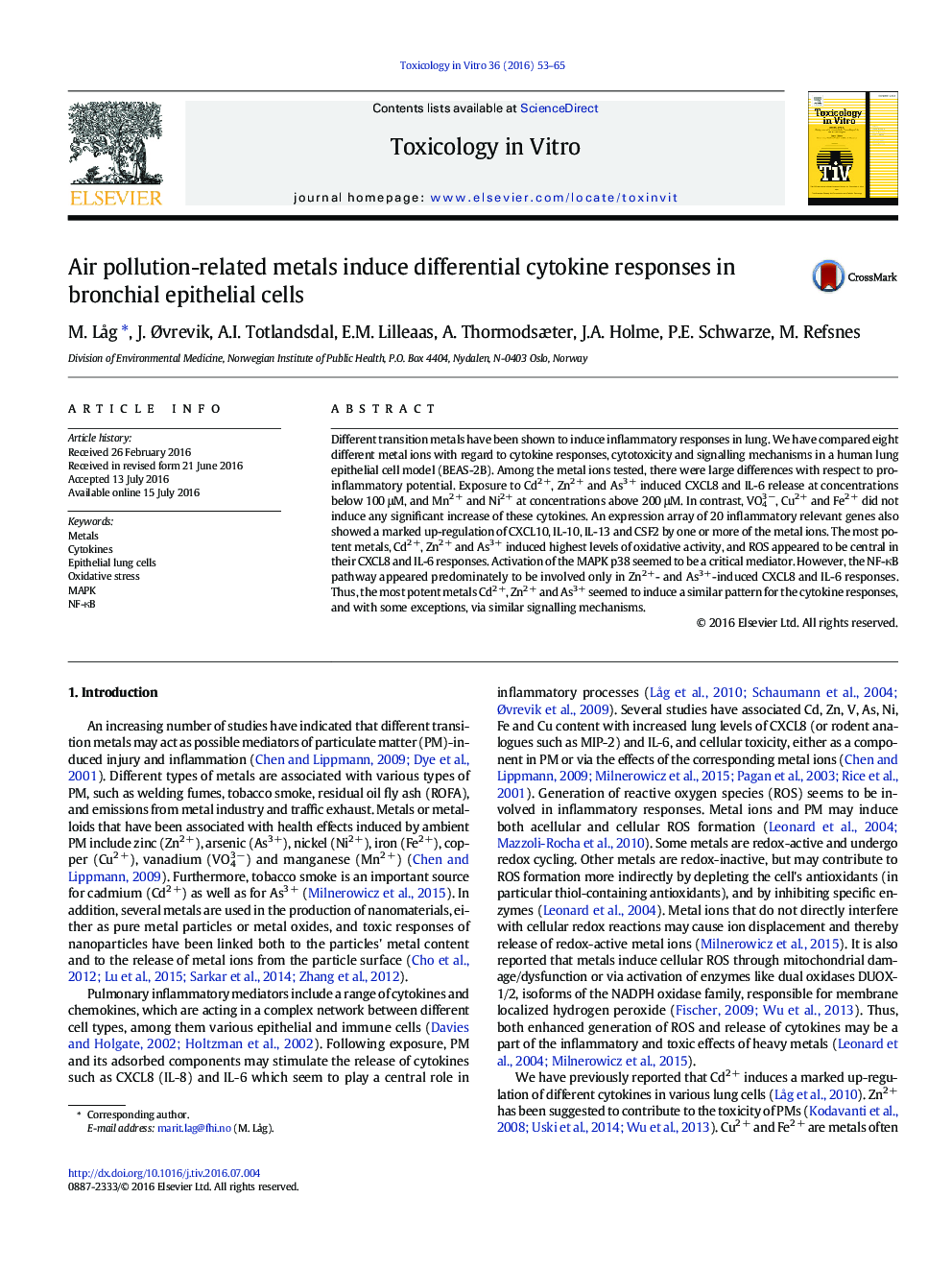| Article ID | Journal | Published Year | Pages | File Type |
|---|---|---|---|---|
| 5861134 | Toxicology in Vitro | 2016 | 13 Pages |
Abstract
Different transition metals have been shown to induce inflammatory responses in lung. We have compared eight different metal ions with regard to cytokine responses, cytotoxicity and signalling mechanisms in a human lung epithelial cell model (BEAS-2B). Among the metal ions tested, there were large differences with respect to pro-inflammatory potential. Exposure to Cd2 +, Zn2 + and As3 + induced CXCL8 and IL-6 release at concentrations below 100 μM, and Mn2 + and Ni2 + at concentrations above 200 μM. In contrast, VO43 â, Cu2 + and Fe2 + did not induce any significant increase of these cytokines. An expression array of 20 inflammatory relevant genes also showed a marked up-regulation of CXCL10, IL-10, IL-13 and CSF2 by one or more of the metal ions. The most potent metals, Cd2 +, Zn2 + and As3 + induced highest levels of oxidative activity, and ROS appeared to be central in their CXCL8 and IL-6 responses. Activation of the MAPK p38 seemed to be a critical mediator. However, the NF-κB pathway appeared predominately to be involved only in Zn2 +- and As3 +-induced CXCL8 and IL-6 responses. Thus, the most potent metals Cd2 +, Zn2 + and As3 + seemed to induce a similar pattern for the cytokine responses, and with some exceptions, via similar signalling mechanisms.
Related Topics
Life Sciences
Environmental Science
Health, Toxicology and Mutagenesis
Authors
M. LÃ¥g, J. Ãvrevik, A.I. Totlandsdal, E.M. Lilleaas, A. Thormodsæter, J.A. Holme, P.E. Schwarze, M. Refsnes,
